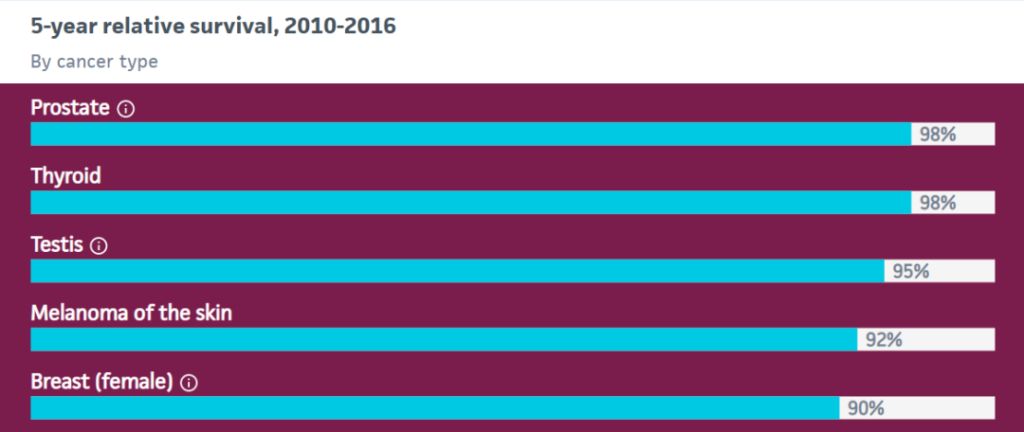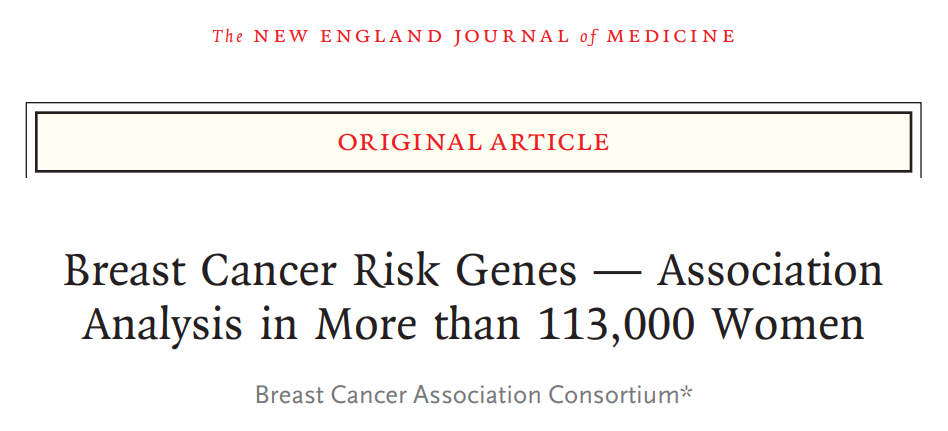NEJM: 12 genes are closely related to increased breast cancer risks
- Why Lecanemab’s Adoption Faces an Uphill Battle in US?
- Yogurt and High LDL Cholesterol: Can You Still Enjoy It?
- WHO Releases Global Influenza Vaccine Market Study in 2024
- HIV Infections Linked to Unlicensed Spa’s Vampire Facial Treatments
- A Single US$2.15-Million Injection to Block 90% of Cancer Cell Formation
- WIV: Prevention of New Disease X and Investigation of the Origin of COVID-19
NEJM: 12 genes are closely related to increased breast cancer risks
NEJM: 12 genes are closely related to increased breast cancer risks. For cancer, early prevention, early detection, and early diagnosis often mean higher survival rates.
With the latest 2020 cancer data released by the International Cancer Society, breast cancer has officially replaced lung cancer as the world’s most common cancer. In 2020, the number of new cases of breast cancer worldwide is expected to reach 2.26 million.
Compared with other cancers, the 5-year survival rate of breast cancer is not low. In the United States, the 5-year survival rate of breast cancer can reach 90%, making it one of the 5 cancers with the highest 5-year survival rate (in breast The preceding cancers are: prostate cancer, thyroid cancer, testicular cancer and melanoma).

Image source: ACS official website
The reason why breast cancer can achieve such a high 5-year survival rate is closely related to the early diagnosis of breast cancer, and genetic screening is one of the effective methods.
Many people learned of this news from the mass news for the first time. It may be that Angelina Jolie took a mastectomy to reduce the risk of breast cancer when she discovered that she had a family BRCA gene mutation. It can be said that the tumor The detection of susceptibility genes has become an important means for us to prevent and screen people who are prone to cancer.
Recently, the top international medical journal “New England Journal of Medicine” (NEJM) published a research paper titled “Breast Cancer Risk Genes — Association Analysis in More than 113,000 Women”.
The study conducted extensive genetic testing on genetic samples from up to 113,000 women (60,466 women with breast cancer and 53,461 control women) from 25 countries, and found that in addition to the BRCA1 and BRCA2 genes,
Otherwise
- ATM
- CHEK2
- PALB2
- BARD1
- RAD51C
- RAD51D
- PTEN
- NF1
- MSH6
- TP5
3 Gene mutations are directly related to the increased risk of breast cancer.

The BRCA1 gene and BRCA2 gene may be the most well-known breast cancer susceptibility genes, and the TP53 gene is the most common tumor suppressor gene. It is related to more than 50% of the risk of cancer. It can guide and help us find women who have not yet developed cancer but are already at potential threats.
Of course, the sorting here is not random. Studies have found that ATM, BRCA1, BRCA2, CHEK2, and PALB2 genes are associated with a higher risk of breast cancer, while BARD1, RAD51C, RAD51D, PTEN, NF1, MSH6 and TP53 genes are Medium risk.
An interesting phenomenon was also discovered in the research:
With the increase of age, the influence of different genes on breast cancer risk is constantly changing. The six genes BRCA1, BRCA2, CHEK2, PALB2, PTEN and TP53 will also tend to flatten out with age. Of course, this also Remind us that young women need to be more attentive to these genetic tests.
Different genes are also closely related to the subtypes of breast cancer. For example, the incidence of estrogen receptor (ER)-negative breast cancer is more closely related to BARD1, BRCA1, BRCA2, PALB2, RAD51C and RAD51D. ; And estrogen receptor (ER) positive breast cancer is related to ATM and CHEK2 genes.
For cancer, early prevention, early detection, and early diagnosis often mean higher survival rates. In recent years, the improvement of new detection technologies has also continued to increase the probability of early cancer diagnosis. Various new cancer early screening technologies such as susceptibility gene detection and ct DNA/CTC detection are flourishing, helping us to detect cancer earlier Traces of occurrence.
(source:internet, reference only)
Disclaimer of medicaltrend.org



